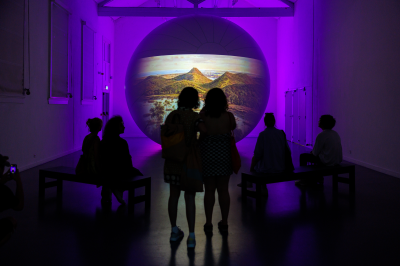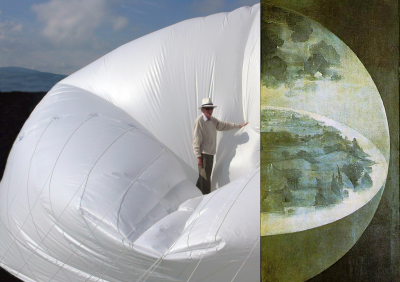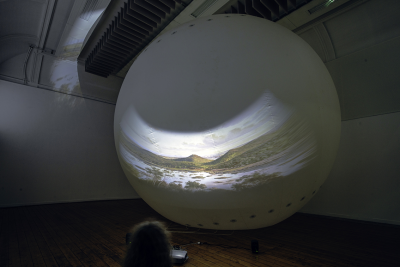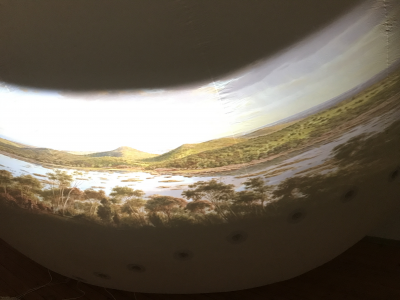
What is this world?
Park, Tilburg
2022
Dolf Henkesprijs
TENT, Rotterdam
2023
What is this world? What is this world? is a project that is gradually taking shape. It explores and connects a multitude of perspectives on and of the world, in dialogue with the public and participants.
A large 8 m inflatable ball filled the space at Park, to form a backdrop and background for discussion, and a stand-in for the 'world'. Participants and the public were invited to respond to the work in a series of informal workshops and conversations, and actively fill the space with their ideas and imaginations about the current state and future of this world. World as object and site in relationship to which the people need to negotiate their actions in a wise way to be able to speak at all in the future. What is this world? takes and makes time to listen to sounds and voices, to sense the space, hear each other, and talk back.
On the ball, a new montage of the video work One to One is projected to reflect on abundance, discomfort, and loss. One to One is a case study of a andscape where remaking in terms of art is activated against the destruction of that landscape, as an ‘example' of colonial observations that usually and almost immediately mandated eradication of that very landscape.
In 1855, landowner James Dawson commissioned painter, botanist and gold-digger Eugene von Guérard
to paint Tower Hill, a volcanic area in Victoria, Australia. This detailed painting depicts the vegetation as the Aborigines knew it and just before intensive European settlement caused rapid degradation of the site. One century later, the land was systematically reforested with native flora with the help of hundreds of school children, naturalists and volunteers. Von Guérard's painting was used as a model, map, guide and botanical template. One to One reflects on what it means to see in detail. Alexander Von Humboldt believed that works of art provide important information and that artists can visualize aspects of the environment and uncover the complexities of the earth, in a way that scientists cannot. One to One speaks to that.
Bik Van der Pol are interested in the potential of the classical chorus into the present. They are nspired by La Rabbia (Rage), a film by Pier Paolo Pasolini and Giovanni Guareschi commissioned by Italian television in 1962, and John Berger's reflections on this film. Crucially, the Greek chorus was not made up of actors – instead (male) citizens were chosen to represent the city. Their role was to speak for past and future generations of the city; "When they spoke of what the public had already recognised, they were grandparents. When they gave voice to what the public felt but had been unable to articulate, they were the unborn."





